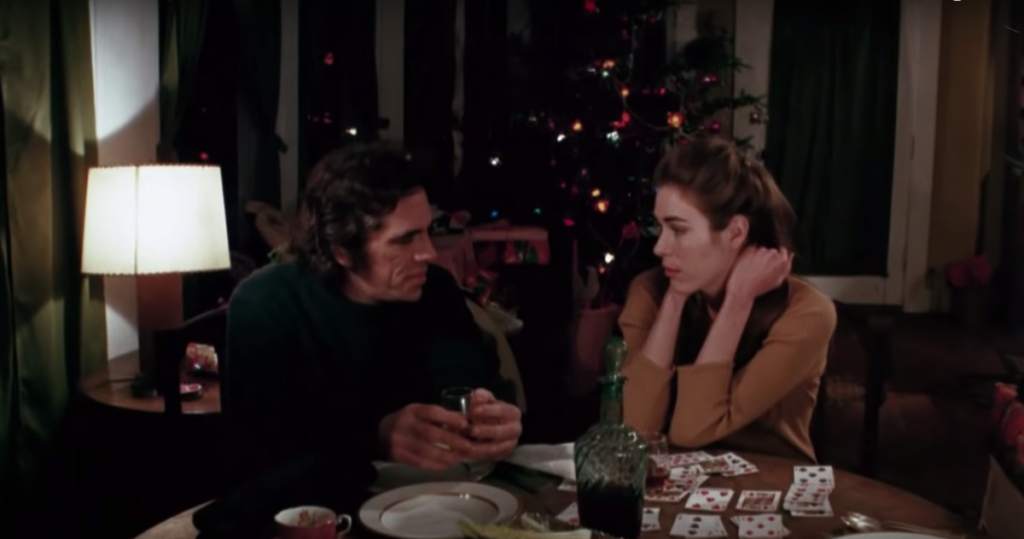
A precursor to both Black Christmas (1974) and Halloween (1978), Silent Night, Bloody Night (1972) is something of an unsung classic in the Holiday Horror genre. Silent Night, Bloody Night preceded the film Sugar Cookies (1972) as a collaboration between co-writer and director Theodore Gershuny, producer Lloyd Kaufman, and actress Mary Woronov. Although Silent Night, Bloody Night wasn’t a big hit theatrically, it did become something of a holiday staple on television in the seventies and eighties.
The film opens with Woronov recounting how the Butler mansion has come to be bulldozed to the ground. The film focuses on these events and is primarily concerned with building up the mystery around the Butler House. Silent Night, Bloody Night is very much a film of local legends and ghost stories. When the heir to the Butler estate returns and a series of disappearances follow, Woronov becomes entangled in the mystery.
Silent Night, Bloody Night is part slasher and part Gothic horror. The emphasis on location and the extended flashback to the Butler Christmas party of 1935 are all suggestive of tropes in the Gothic tradition. Themes of incest, vengeance, murder, and insanity pack this extended flashback with images more akin to Amicus films than the gritty sleaze of American films of the time. The scenes of murder that juxtapose the Gothic trappings and the flashback draw their inspiration from the Italian giallo films.
The combination of these to aesthetics is largely successful. Two unique stylistic trends are wed and blended together by the muted soundtrack and the holiday decor that often liters the mise en scène. Director Theodore Gershuny prioritizes atmosphere above all else in Silent Night, Bloody Night which is why the film is so affecting. Silent Night, Bloody Night is a quiet film wrought with the uneasiness of silence immersed in the trappings of Christmas.
The killer coming home and the mysterious phone calls in Silent Night, Bloody Night are the obvious elements that inspired both Bob Clark and John Carpenter. However the use of physical space and distinct locations coupled with diegetic sound reveals a debt to Let’s Scare Jessica To Death (1971). The intertextual web between Silent Night, Bloody Night and these other films is a perfect argument for the importance and impact of Silent Night, Bloody Night.
What’s even more unique about Silent Night, Bloody Night is its inclusion of underground film personalities. Mary Woronov, a Warhol superstar, is an obvious luminary of New York’s underground scene. But in Silent Night, Bloody Night she is joined by the legendary Candy Darling and Ondine as well as the great filmmaker Jack Smith. Like Sugar Cookies, Silent Night, Bloody Night bridges the gap between the underground and the grindhouse. These cult figures only appear in the extended flashback but their charisma is unmatched and lends the scene a uniquely disturbing energy.
Silent Night, Bloody Night is low budget genre filmmaking at its best. The fact that this film is overshadowed by so many lesser holiday horror films is a shame. Hopefully Silent Night, Bloody Night will be the subject of a new critical evaluation that results in a much needed restoration, but that might just take a Christmas miracle. Luckily, for now, Silent Night, Bloody Night can be watched in its entirety for free on Youtube in a less than pristine print.
